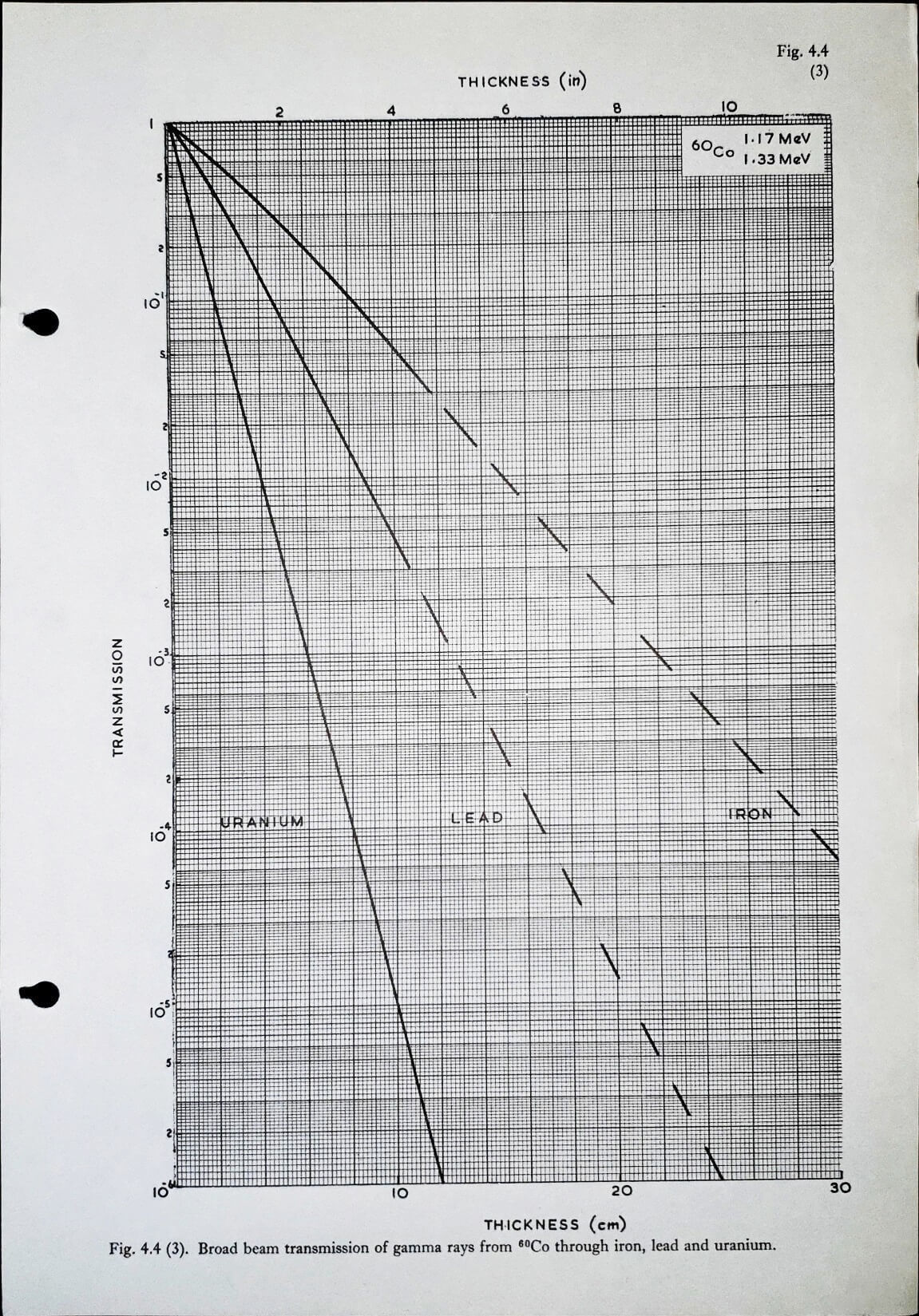Broad beam transmission of gamma rays from Co-60 through iron, lead and uranium Fig 4.4 (3)
Published: Sep 29, 2021

Reality check example 1 (Co-60 through lead)
The literature (IAEA / NCRP) reports the TVL (10th value thickness) for Co-60 through lead as being 4 cm. If you look at the above graphical data you can see that this value is reflected in the trend with the exception of the first TVL (10-1). There is a slight curve in the first TVL (TVL1) such that the indicated thickness is 4.5 cm. Following on you can then see that TVL2 = 4 cm, TVL3 = 4 cm and so on. In fact the rest of the TVL for Co-60 in lead could then be expressed simply as TVLe = 4 cm. This effect is more pronounced with much higher energy radiation through less dense shields (e.g. 10 MV x-rays through standard density concrete). In these cases the total TVLtotal = TVL1 + TVLe. However, in the case of Co-60 and lead, the difference with increasing thickness diminishes (since its only a 5 mm difference in the first TVL1). So this slight discrepancy is generally ignored and the TVL is simply reported as 4cm.
Reality check example 2 (Co-60 through uranium or Iron)
The above TVL issues can also be explored in the same way for uranium and iron. What you can see is that the effect is less pronounced for the higher density uranium (where the curve is pretty much a straight line), and more pronounced for the less dense iron. The literature reports the TVL for Co-60 through iron (steel) as being 7 cm. From the above curve, TVL1 for Co-60 through iron appears to be 8 cm and TVL2 is found to be 7 cm. In fact you can see that TVLe for Co-60 through iron is 7 cm and is reported simply as TVL = 7 cm. You need more steel than lead to shield Co-60 (for a desired transmission) and so the additional 1 cm lead required for TVL1 is found to be ignored by modern shielding data literature.
